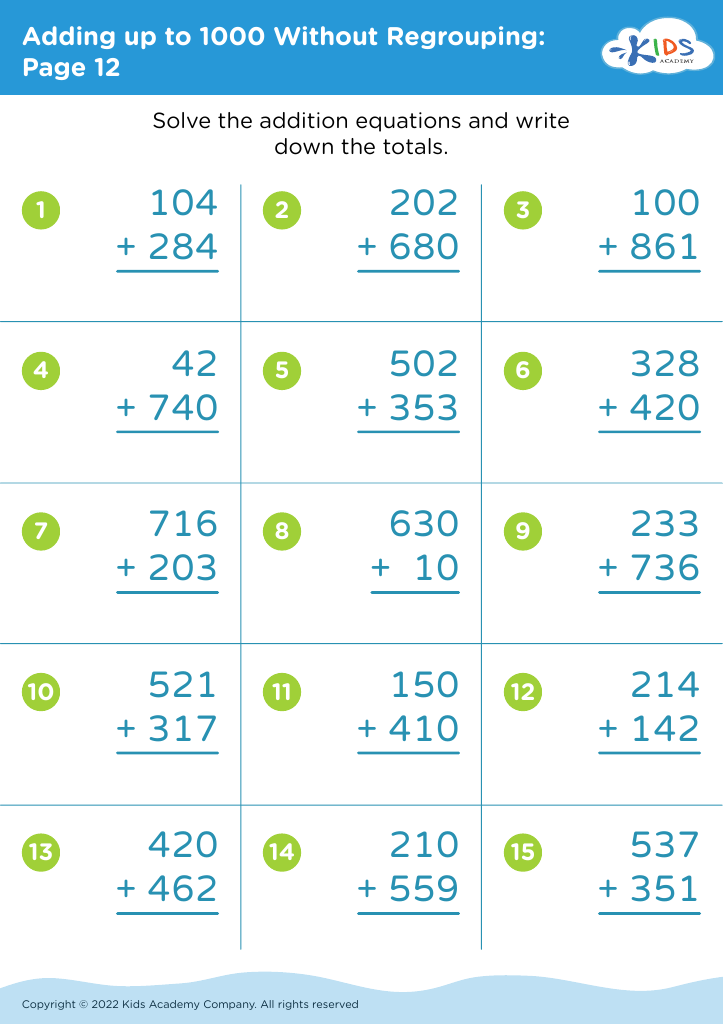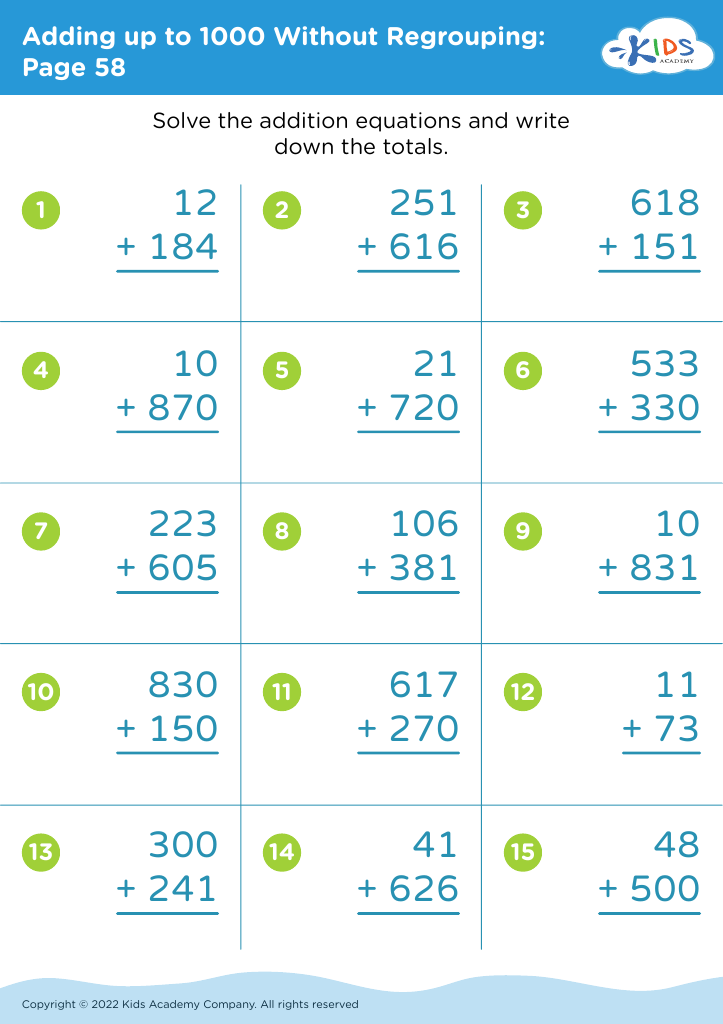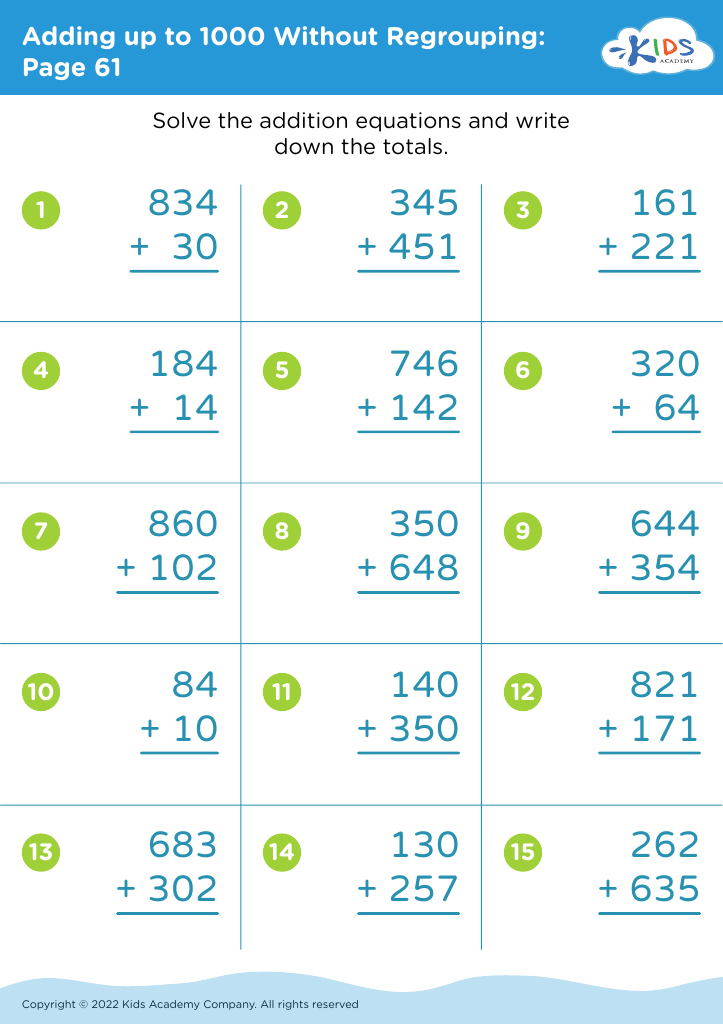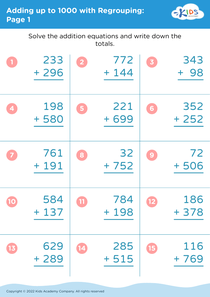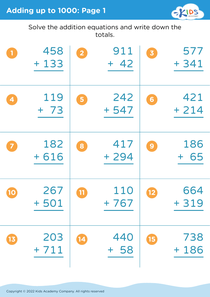Recognizing shapes Adding up to 1000 Without Regrouping Worksheets for Ages 6-8
3 filtered results
-
From - To
Explore our engaging "Recognizing Shapes Adding Up to 1000 Without Regrouping Worksheets" designed for children ages 6-8! These colorful, interactive worksheets combine shape recognition with addition skills, making learning fun and effective. As students practice adding numbers up to 1000 without regrouping, they will also enhance their understanding of different geometric shapes. Each worksheet is carefully crafted to build essential math competencies while fostering creativity and critical thinking. Perfect for classroom or home learning, these resources support young learners on their educational journey. Dive into the world of shapes and numbers today!
Recognizing shapes and mastering basic addition skills, such as adding up to 1000 without regrouping, are foundational for children aged 6-8. Parents and teachers should prioritize these skills as they are crucial for cognitive development and future learning.
Understanding shapes is more than just geometry; it nurtures spatial awareness, critical for problem-solving and everyday tasks, like organizing space or navigating environments. It also lays the groundwork for more complex mathematical concepts, woven into art and science, thus fostering creativity and analytical thinking.
Meanwhile, the ability to add numbers up to 1000 without regrouping builds essential arithmetic proficiency. This skill bolsters numerical fluency, allowing children to perform calculations with confidence and ease. It serves as a stepping stone to more advanced math, alleviating anxiety associated with difficult concepts later on.
Moreover, these skills promote persistence, focus, and self-esteem. They enable children to tackle challenges independently, fostering a lifelong love for learning. Together, shape recognition and number sense cultivate essential life skills that aid not only in academic settings but also in real-world applications, ensuring children are well-prepared for their educational journeys ahead. Investing time in these areas can have lasting positive impacts on children's development.

